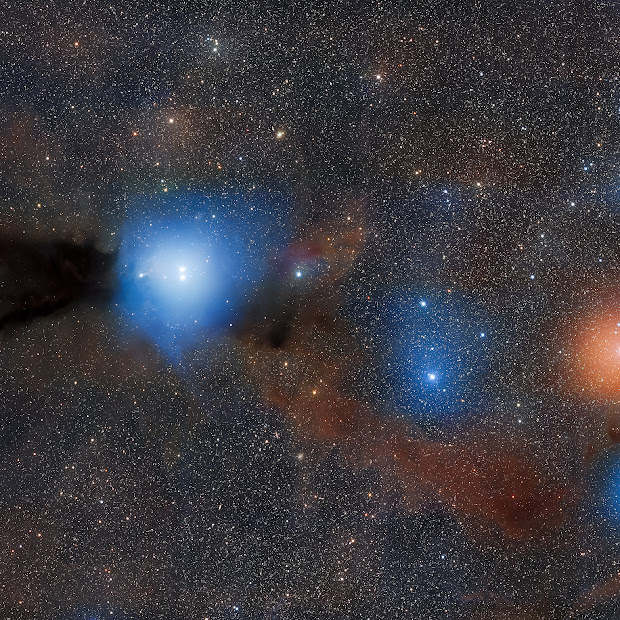Click the image for higher resolution
Gemini South, one half of the International Gemini Observatory operated by NSF's NOIRLab, captured NGC 7727. This giant was born from the merger of two galaxies, an event that started around a billion years ago. At its center lies the closest pair of supermassive black holes ever found, two objects that are destined to coalesce into an even more massive black hole.
Just as you may bump into someone on a busy street, galaxies too can bump into each other. But while galactic interactions are much more violent than a bump on a busy street, individual stars don't generally collide since, compared to their sizes, the distances between them are very large. Rather, the galaxies dance around each other, with gravity creating tidal forces that dramatically change the look of the two dance partners. "Tails" of stars, gas and dust are spun around the galaxies as they eventually form a new, merged galaxy, resulting in the disordered and beautifully asymmetrical shape that we see in NGC 7727.
Also visible in this image are two bright points at the center of the galaxy, another telltale sign of its dramatic past. The core of NGC 7727 still consists of the original two galactic cores, each hosting a supermassive black hole. Located about 89 million light-years away from Earth, in the constellation of Aquarius, this is the closest pair of supermassive black holes to us.
The black holes in NGC 7727 are observed to be just 1600 light-years apart in the sky and are expected to merge within 250 million years, the blink of an eye in astronomical time. When the black holes merge they will create an even more massive black hole.
Our home galaxy, which also sports a supermassive black hole at its center, is on a path to merge with our closest large neighbour, the Andromeda Galaxy, billions of years from now. Perhaps the resulting galaxy will look something similar to the cosmic dance we see in NGC 7727, so this image could be giving us a glimpse into the future.
Image Credit: International Gemini Observatory/NOIRLab/NSF/AURA
Acknowledgment: PI: C. Onken (Australian National University)
Image processing: T.A. Rector (University of Alaska Anchorage/NSF's NOIRLab), J. Miller (International Gemini Observatory/NSF's NOIRLab), M. Rodriguez (International Gemini Observatory/NSF’s NOIRLab), M. Zamani (NSF's NOIRLab)
Image enhancement: Jean-Baptiste Faure















